How I boosted my VO2 Max fitness to 'excellent' on my Garmin watch
Plenty of runners ignore anaerobic and low aerobic runs (plus walking!). But they'll make you faster where long runs won't.
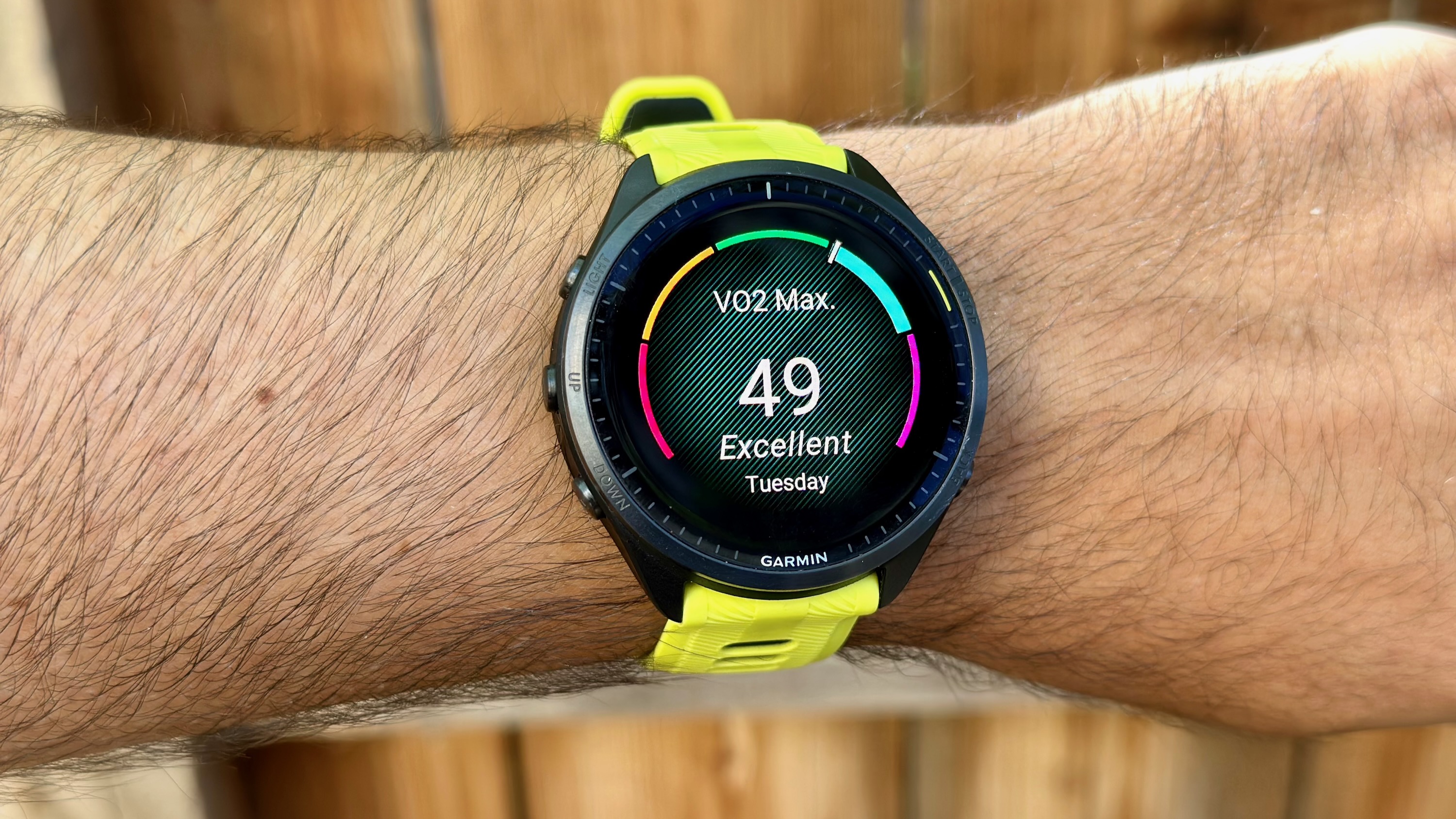
VO2 Max, or the maximum volume of oxygen that your body can inhale and convert into energy during an intense workout, is the main metric most smartwatches use to judge your athleticism. Brands like Samsung, Apple, and Fitbit decide how successful a workout is based on your VO2 Max score. In the case of Garmin watches, your predicted race times and recommended daily workout pace stem directly from this stat.
Technically, you can only get a proper VO2 Max reading in a lab, sprinting on a treadmill while wearing a face mask that measures your air intake and exhalation. But in lieu of that, Garmin's Firstbeat Analytics algorithm is probably the best simulated alternative for consumers.

In his weekly column, Android Central Fitness Editor Michael Hicks talks about the world of wearables, apps, and fitness tech related to running and health, in his quest to get faster and more fit.
Different studies vary on what makes a VO2 Max score "good" or "excellent." I chose to judge by Garmin's VO2 standards, which suggest you have an excellent VO2 Max (measured in milliliters of oxygen) if you're in the top 20% for your age group and gender. For me — a man in his early 30s — that's 48.3, which Firstbeat Analytics separately claims is only "Good."
But let's not get caught up in labels. The point is I've had a steady VO2 Max score of 46 or lower since I first started tracking the stat in 2021. As I raised my mileage, ran half marathons, jogged and walked to finish marathons, overcame a foot injury, and did my utmost best to improve as a runner, it remained mostly static despite the ups and downs.
Then, in just the past couple of months, I've jumped from 46 to 48.6 into that "excellent" VO2 Max zone. I figured out what I need to do to improve, and I'm confident my score will keep climbing in the ensuing weeks.
I'm no running coach by any means, and nothing I explain below will be groundbreaking to long-time runners. But for fellow "casual" runners who want to step up their fitness, here's where you should start.
Pay attention to your training load focus
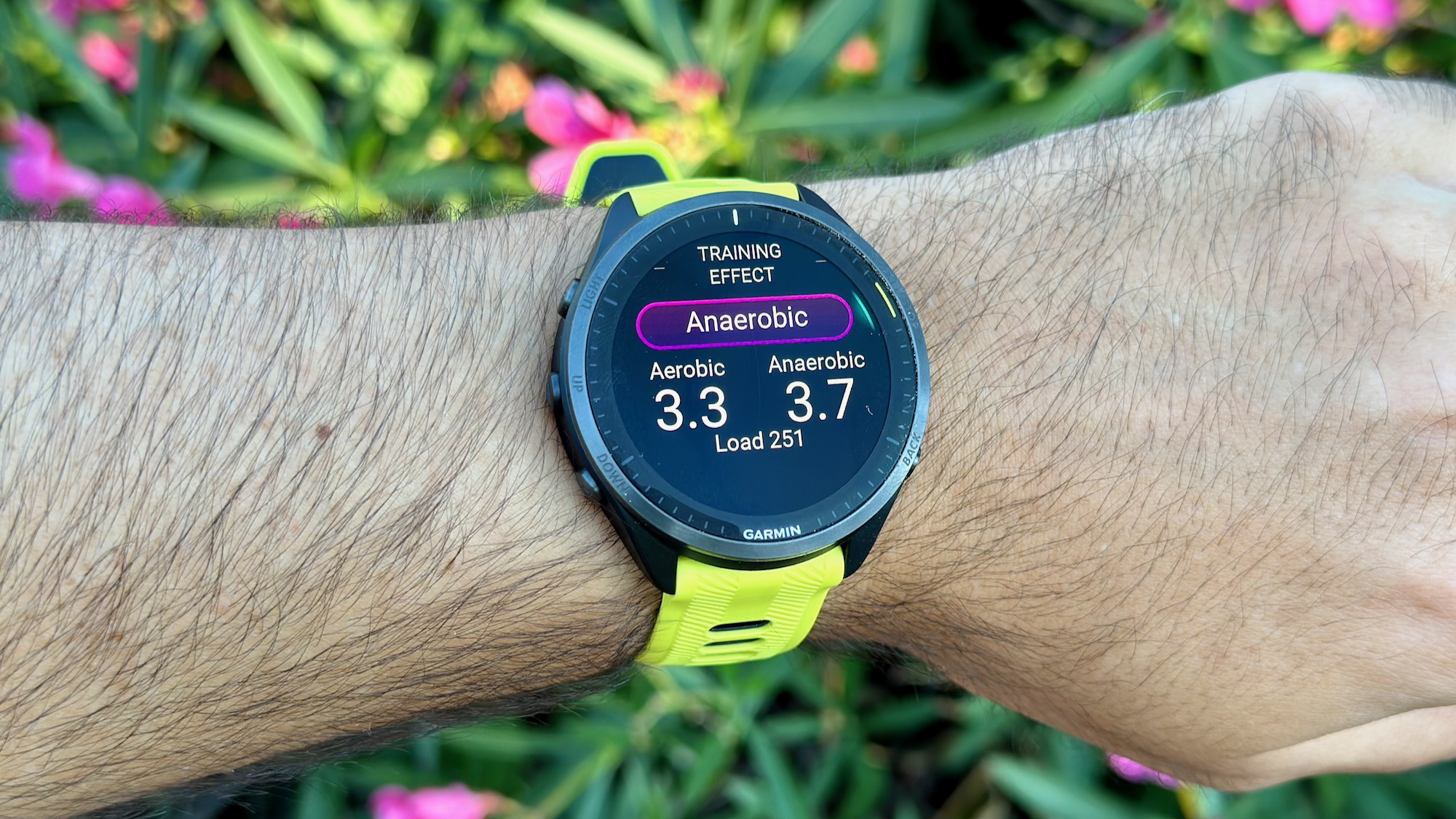
Most modern running watches have a training load feature that tells you how hard your run was in terms of both aerobic and anaerobic effort. Striking the right balance between them is something that seems obvious but is hard to pull off in practice.
Get the latest news from Android Central, your trusted companion in the world of Android
Aerobic efforts run the gamut from easy jogs to tempo or threshold runs and are judged based on your total oxygen consumption. You get a training effect (TE) score from 0 to 5 after your run ends; while higher is obviously better, focusing solely on fast aerobic activities doesn't leave much room for improvement.
Anaerobic gains come when you run hard enough to need more energy than your inhaled oxygen can deliver; in other words, you push past your VO2 Max capacity. It's a key way to force your body past its current limits instead of working within them, with a 5.0 TE as your target. Yet, finding an appropriate time and place to hit your limits can be challenging when you're not part of a running club or a pro athlete.
There's also a third metric that most non-Garmin watches ignore: Low Aerobic. To hit this, you specifically need to complete activities that fall within Zone 1 or Zone 2 of your heart rate zones, or about 50–70% of your maximum heart rate. High aerobic load comes from Zone 3 and up, which is where your heart rate naturally climbs the longer and harder you run.
I spent most of my running life unwittingly focused on high aerobic, running at whatever pace felt decently challenging but rarely pushing beyond my limits or slowing down below them. Shifting to focus on anaerobic and low aerobic was a major adjustment, and it doesn't always feel natural. But that's exactly what I needed to improve my VO2 Max score.
So, to that end, my first recommendation is simply to buy and rely on a watch that gives you training load focus data. With Garmin watches, look at recent Forerunners like the Forerunner 265, Instinct models like the 2X Solar, or any of the top-tier models like Fenix 7 or Epix Gen 2.
What is low aerobic, and why does it matter?
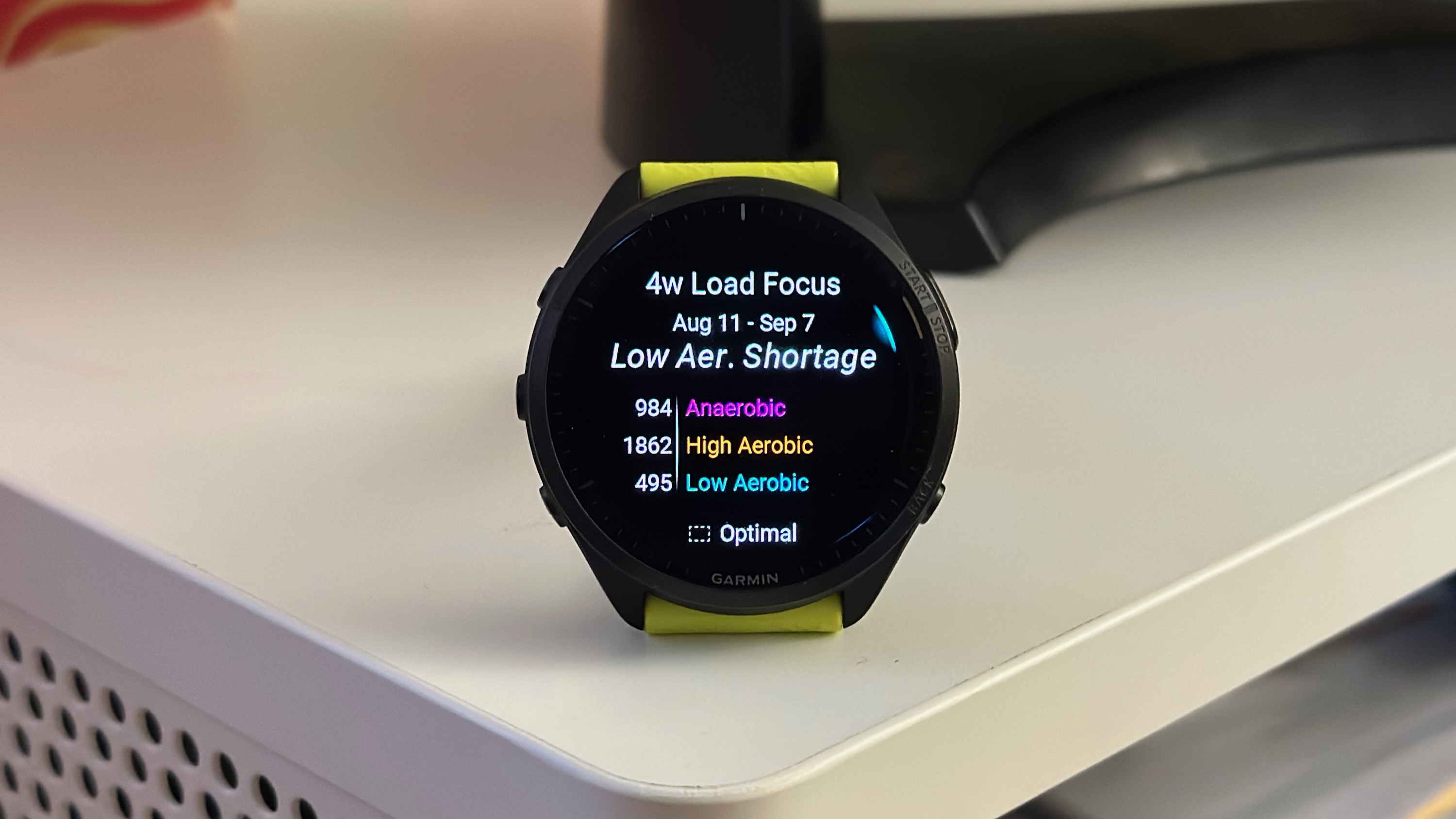
You can see Garmin's training load focus screen above, with a message that plenty of Garmin watch owners see: "low aerobic shortage." Until you hit the balance training load that Garmin demands, your watch will keep recommending runs at a boringly slow pace.
Why does low aerobic matter? Garmin doesn't explain it well, simply saying it builds your "foundation" and asking you to trust its algorithm. But from what I understand, runners hit a plateau when all they do is run at or around their lactate threshold (the point where lactic acid builds up in your blood due to high exertion). Moving below your lactate threshold heart rate (LTHR) is the only way to increase how fast you can run before hitting LTHR.
For example, if you hit Zone 3 at a 10-minute pace, all the fast running in the world won't change that; you'll just get more endurance at running with excess lactate build-up. But if you continue to run at a 10:00 pace, your body will eventually become accustomed to that pace as a low-aerobic activity, and then you'll find you can handle 9:50-pace runs before crossing into high-aerobic levels. Then, 9:40, and so on.
Here's why so many Garmin watch owners struggle with this: running at a slow pace while constantly glancing at your watch to make sure your heart rate hasn't climbed too high is frustrating! It keeps your brain focused on minutiae instead of letting you fall into a relaxed zone. And the fact is, even for runners with an "excellent" VO2 Max score, staying in Zone 2 during a run is a challenge, especially after a couple of miles.
You can try walking, of course, but a fit athlete will barely hit Zone 1 with a fast walk, and it doesn't generate very much load unless you walk for hours.
So, in essence, for the sake of your VO2 Max improvement, you have to accept that you'll have to start and stop frequently to stay in the target zone instead of just enjoying your runs. Meanwhile, your friends will see your post-run summaries on Strava or your favorite running app of choice and assume you're slacking or backsliding.
But if you can get past your pride and eat your metaphorical vegetables, it'll pay off with a stronger pace foundation in the long run.
Anaerobic: become the 'local legend' at your local track
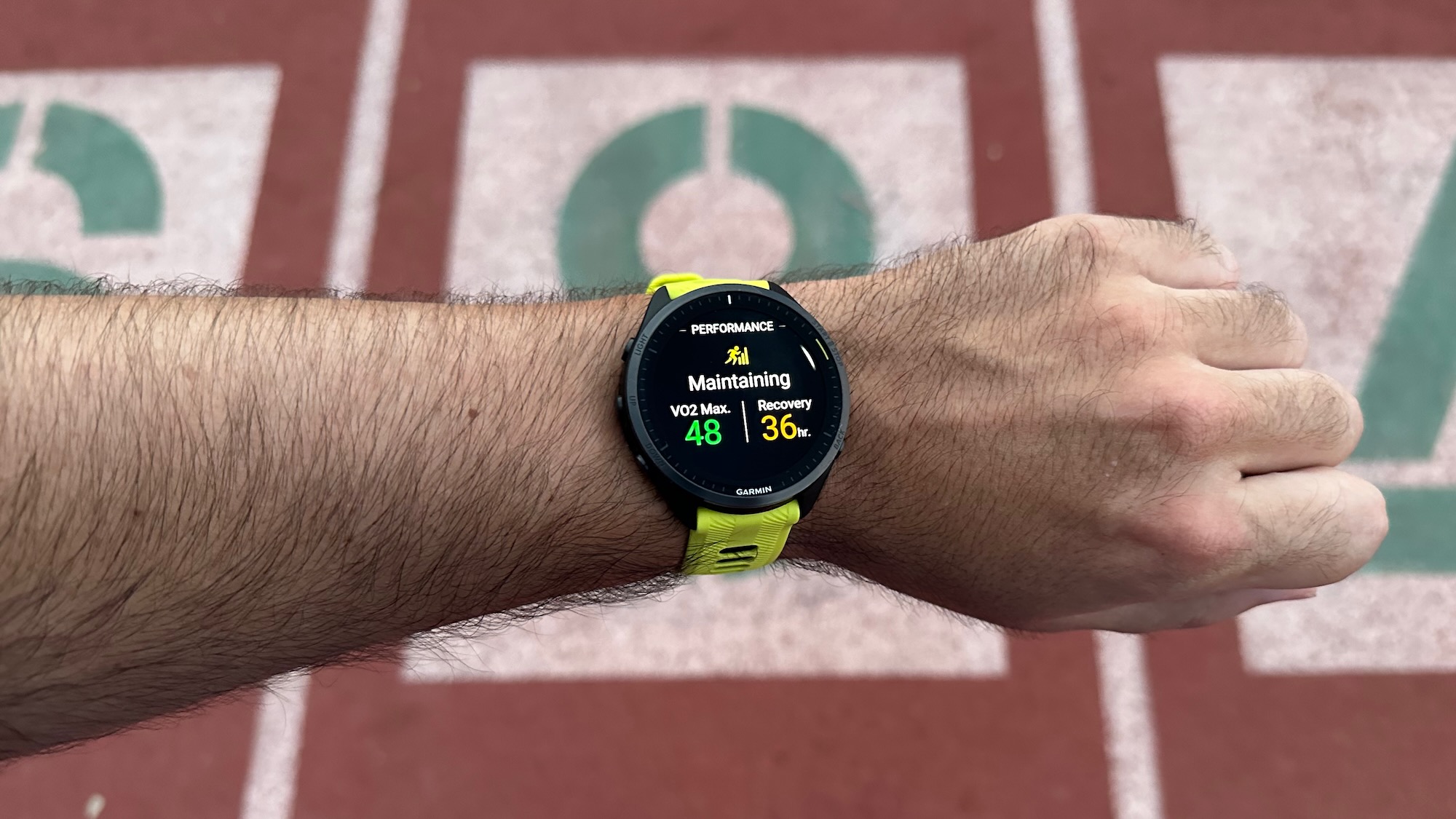
It's hard to sustain an anaerobic run when you have to cut your sprints short at intersections or feel self-conscious as you dash down public paths and startle your neighbors.
Equally important, you need to know your exact pace and interval so you're not just sprinting aimlessly and unsustainably — without constantly glancing at your wrist.
The obvious solution is to find your nearest track that's open to the public. Typically, so long as it's not during school hours, you can run freely on tracks at nearby public high schools and colleges. This site, RunTrack, lets you search for tracks that are "open to the public" in your area if you're not certain.
In my case, Strava tells me that I'm the "local legend" at the college track near my house, meaning I've run that loop more than anyone else on the app in the last few months. And that's what I recommend you strive for if you're trying to raise your VO2 Max score.
Once you've found a track, you need to pick a speed workout that's right for you. One option is to run at a tempo pace — slightly slower than your typical 5K race pace — for a set period but slowly increase your pace from one mile to the next until you're well past your lactate threshold.
Interval runs are probably the best way to take advantage of a track. You simply alternate between a hard pace and a recovery period for a certain number of sets, depending on your fitness level. Technically, you can set up workouts on your Garmin watch to keep you within a certain pace threshold and time how long you have until the next interval.
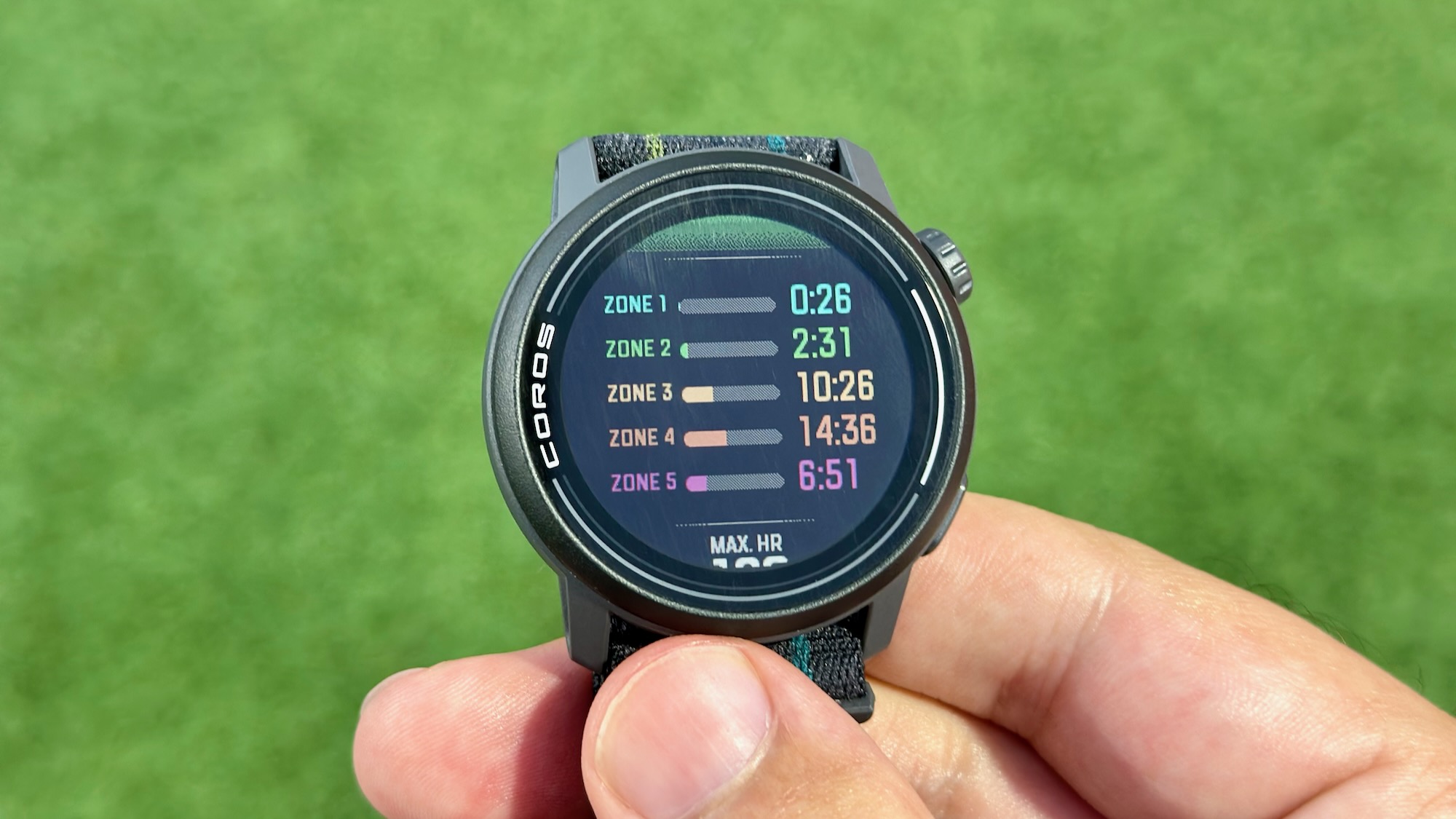
Personally, I take a simpler and more flexible approach: I run either 400m or 800m at a hard pace — either my Zone 4 or Zone 5 heart rate — using the lap button on my Forerunner 965 so I can look back on each segment. Once my short interval is done, I pause my workout, give myself a breather, and then run another hard lap or two. And then another, and so on, until I know I've hit the limit of what my muscles can handle that day.
Either that or I jog around the track curves and then sprint at maximum pace for both straightaways, taking a break after a set distance (like a mile).
The reason why I like this casual approach is that I can push myself to my limit without getting hung up on hitting a specific distance or number of intervals. Instead, if I ran four hard laps during my last workout, I try to run an extra 400 or merge two laps into one hard 800. Or, if I'm feeling too worn down for a long workout, I focus on my lap PR and try to lower it by a few seconds.
With this method, I've already upped how many laps I can comfortably run, and my top lap pace has fallen by about 15 seconds. Garmin also seems to like this method. If I start with a two-mile jog to the track, then run a hard couple of miles at the track, I typically end up hitting about 4 out of 5 for both aerobic and anaerobic TE.
Then, if I start a walking activity immediately after I finish my sprints, my heart rate typically stays fairly elevated on the journey home, giving me a low aerobic load on top of the rest!
Running a track loop over and over can feel boring if you're not careful. But if you find some good music to listen to over your workout earbuds and treat it like a race or challenge, it can be fun. I like to think back to my high school days when I could run a sub-60 second lap, look at my current times, and try to slowly progress back toward that number. It keeps me motivated.
Skip 'meaningless' miles, for now
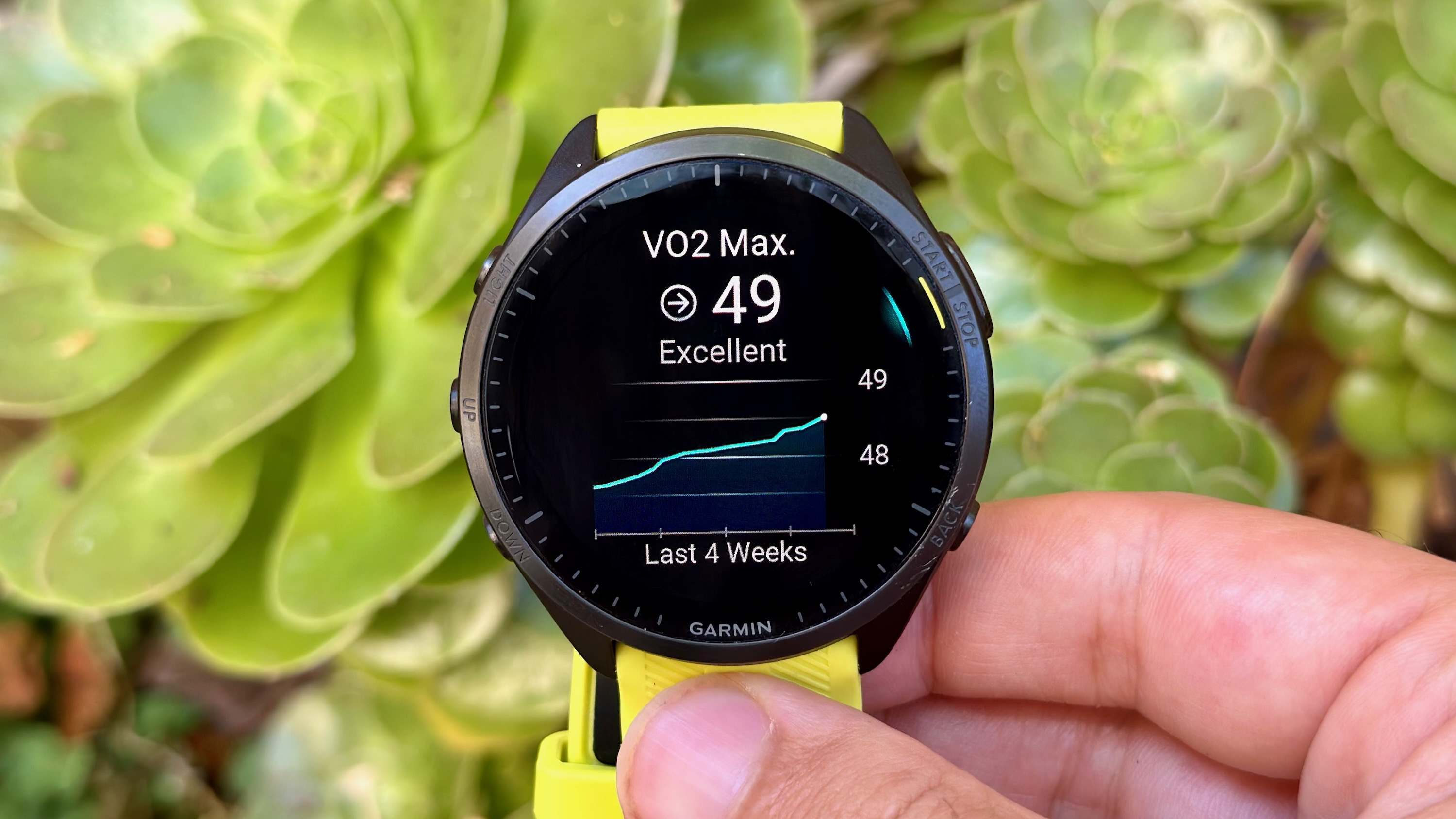
Raising my VO2 Max score by following my Garmin training load suggestions feels very mechanical, and it's shifted how I train.
I used to look forward to long, meandering weekend runs. The problem with those is that my high aerobic training effect score can't climb any higher than 5 out of 5; at a certain point, all that training load at a steady pace isn't going to do you much good. It adds to my recovery time, which subtracts time I can spend pushing harder at the track.
In the past, I escalated my mileage to try and prepare for a marathon I wasn't fit enough for, and ended up injuring my foot, setting back my fitness goals by months. I ended up running far less in the ensuing months until my foot had the strength to run more than a couple of miles before going numb.
Before I try to get back into long race form and up my mileage, I'm focusing entirely on short (3- to 6-mile) targeted workouts at a higher frequency. Eventually, the hope will be that I can do proper long runs that start at low aerobic levels for a few miles before progressing toward higher HR zones. And my anaerobic efforts can also move toward more structured, longer intervals.
If you're where I was, in the "average" or "good" VO2 Max range, long runs have their place as much as short runs. But eventually, you'll plateau on what mileage alone can deliver. Once you hit that ceiling, that's when you should hone in on your training load ratio.
During runs, don't walk. Stop!
When you're first doing couch-to-5K training, you're advised to alternate between running and walking, which makes sense for someone just starting out. It stands to reason that if you're running harder and longer but still don't have quite the fitness level for a sustained effort, you should give yourself moments to walk. So, I'm sure my advice may sound counterintuitive.
I used to walk during my long runs, and I found that it was often difficult to stop walking. I would find myself tempted to just stop my tracked run entirely, even if I was miles away from home on my planned loop, because I couldn't find the motivation to start running again.
Instead, during my recent shift toward both anaerobic and low aerobic training, I found that walking is just a counter-productive bandaid. In both cases, to start my next hard lap or get my heart rate back down to Zone 1/2 levels, I don't need to keep stepping along; I need to swallow my pride, stand or sit in place, and just let my heart fully recover.
It means a couple of minutes of "wasted time" when I'm not getting steps or burning calories, but it helps me bounce back far more ably than I would if I kept dragging my tired body forward. In the long run, for a runner who's slowly but surely improving, give yourself those moments of reprieve and don't feel bad about it.
Outside of runs, walk a lot!
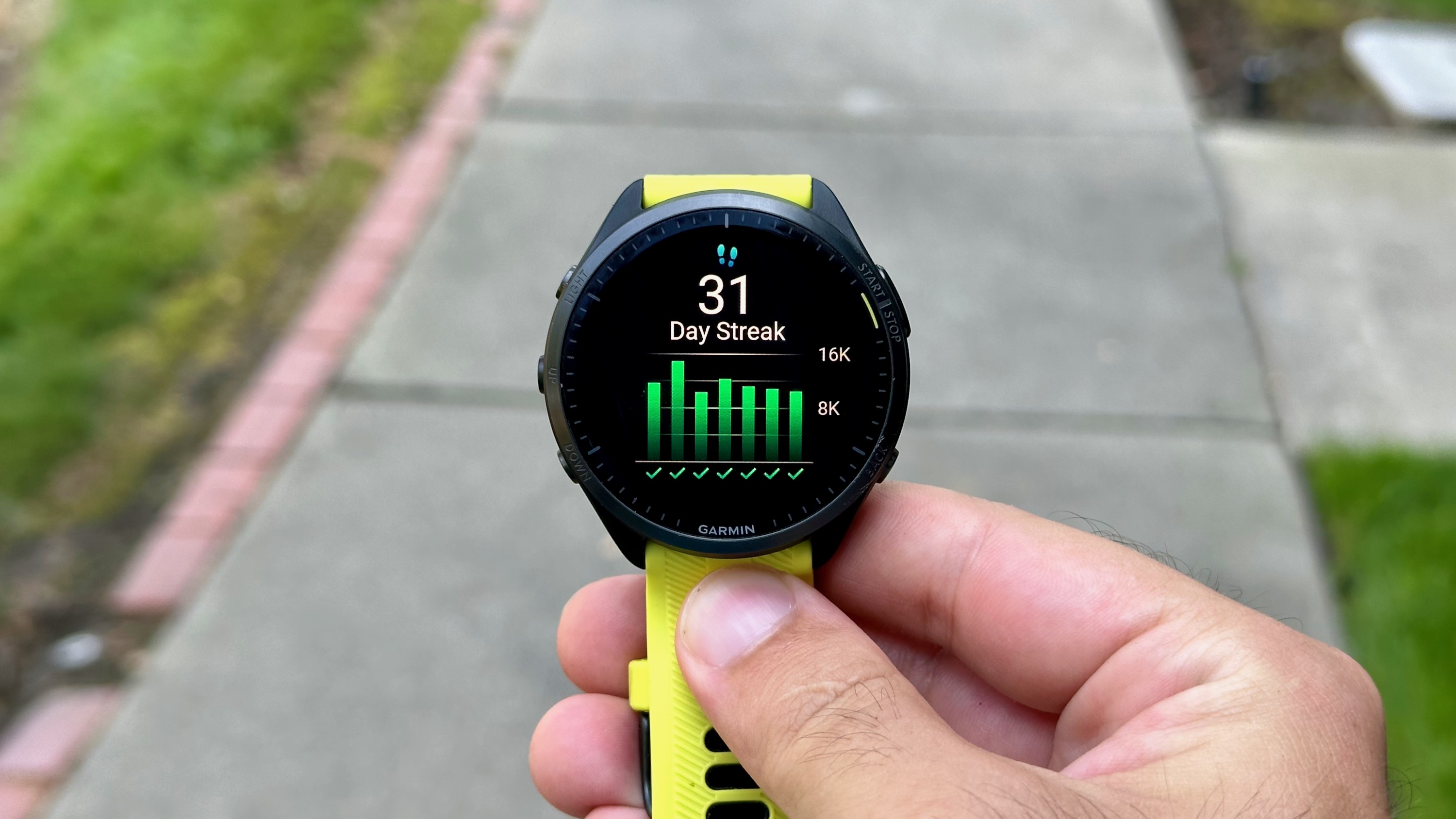
Last week, I wrote about how I walked 10,000 steps a day for a month. This helped me lose several pounds and improve in other areas, like resting heart rate. Also, purely by coincidence, this was the month when my VO2 Max climbed from 47 on its way to 49.
Okay, so it wasn't a coincidence at all. As I wrote in that article, walking every day helped me stretch and recover more quickly from runs and made it easier to know if I had the energy for a short run the day after a hard workout. I would go out for a walk and realize, hey, I'd rather just jog for 45 minutes than walk for 90!
Getting those steps is an easy, low-impact way to maintain your fitness and stay energized after really tough anaerobic runs.
Of course, if you have another cross-training method besides walking, such as some light cycling or actual hiking in hills, that would probably work just as well, if not better — I've heard from some Reddit runners that it's easier to hit and maintain Zone 2 levels on a bike. I'm merely going off of my own experience until I can test that for myself.
I grew up with pretty bad asthma and used an inhaler for years. It was joining my school's cross-country team in high school that put those breathing problems in the rearview mirror. So when I first figured out what VO2 Max was, I immediately felt the need to be "excellent" to help my lungs go beyond my body's limitations.
Not everyone should take the same approach I've outlined above, focused so heavily on metrics that it interferes with just taking an effortless run in the zone. The NYC running club I joined years ago even told me to tape over my running watch during training. Though, of course, I had actual coaches guiding me through varied workouts then.
In the end, my recommended path forward for improving your VO2 Max is simple:
- Find a reliable running watch that highlights your training load focus.
- Try to find as much joy in fast-paced sprints at the track as you do in long, quiet runs on the trail.
- Suck it up and run those annoyingly slow start-and-stop low aerobic runs until you're fit enough for a sustained low-effort run. Or find cross-training that hits that same long, slow workout niche.
I've nailed the first two points; the third one is still a challenge for me.
In terms of picking a running watch, my first recommendation is a reliable Garmin watch like a new Forerunner, since that's led me personally to success.
Otherwise, if you want something more affordable, you could look at the COROS PACE 3, which doesn't have suggested workouts but does have EvoLab to judge your running load in different zones. Or, you could look at the Amazfit Cheetah Pro, which doesn't make your running data that accessible but does offer workout recommendations with specific aerobic or anaerobic focuses via Zepp Coach.

Michael is Android Central's resident expert on wearables and fitness. Before joining Android Central, he freelanced for years at Techradar, Wareable, Windows Central, and Digital Trends. Channeling his love of running, he established himself as an expert on fitness watches, testing and reviewing models from Garmin, Fitbit, Samsung, Apple, COROS, Polar, Amazfit, Suunto, and more.
